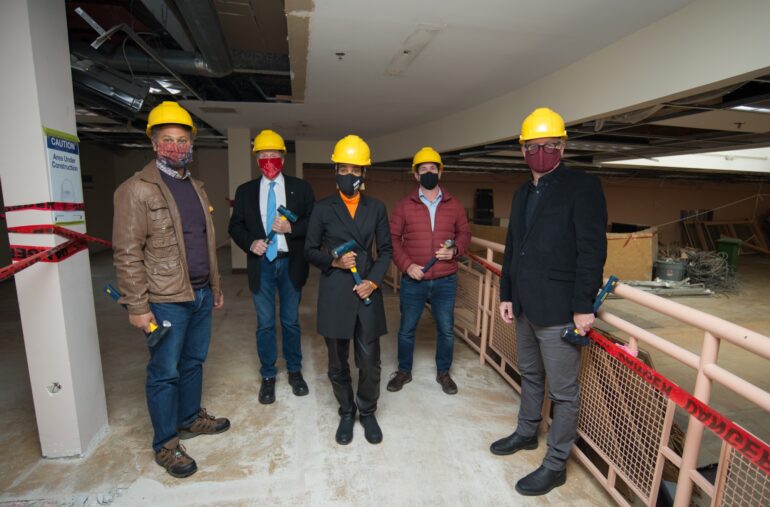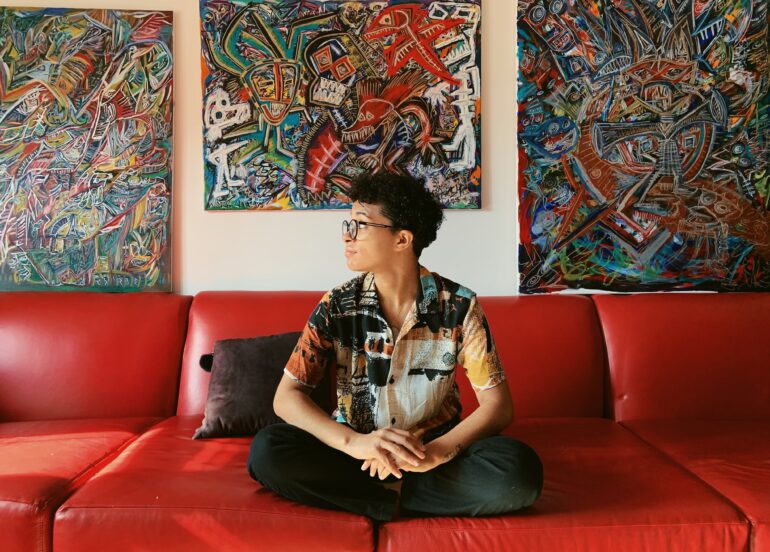John Grant and Jaeybee Martinito
Toronto band The OBGMs recalls a moment of racism before hitting the stage before a performance.
“Every time we were in a venue, people were asking us for drugs because they thought we were there to sell (drugs). Meanwhile, they didn’t know that we were gonna be the guys on the stage,” said Colanthony Humphrey, drummer in the punk band called the OBGMs.
The OBGMs is a punk band based out of the GTA comprised of vocalist and guitarist Densil McFarlane, drummer Colanthony Humphrey, and bassist Joseph Bronsan. On top of that, two out of the three members in the band are Black.
Humphrey recalled many instances of inequalities that he and his bandmates have faced, owing to being in a predominantly white arts scene.

Early on in the band’s career, the OBGMs were compared to many bands that they sounded nothing like.
Humphrey said just because the OBGMs had some swagger with their music; critics tried calling their sound funk.
‘Lazy’ and ‘disrespectful’
“We felt that it was kind of disrespectful, not disrespectful to funk itself as a genre. It was the fact that they didn’t know how to classify us, so the closest thing that they can do is classify us to the next Black thing,” Humphrey said.
Humphrey was very adamant on top of it being racist “it’s just lazy.” He said, “it’s lazy by journalists; it’s lazy by so-called critics.”
“It’s racist, and they don’t even realize it.”
Canadian singer Jessie Reyez gave an interview to CTV this year, talking about a lack of representation at all major recording labels.
“The fact of the matter is that if there are so few Black employees and so many white people in power, but those white people aren’t immersed in the culture,” she told CTV.
A new organization called ADVANCE, has the goal of increasing the representation of Black people in the music industry on the business side.
“Without proper representation within these power structures, what can happen is that the Black voice may go unheard, which in turn can negatively affect Black artists,” said Miro Oballa, co-founder of ADVANCE.
He said they founded the organization — in the weeks after the killing of George Floyd in the United States and the ensuing protests — because there was a lack of representation of Black people on the Canadian music industry’s business side.
Aiming to remove systemic barriers
“We believe that the better equipped and represented Black people are on the business side of the music industry, the easier it will be to remove some of the existing systemic barriers that Black artists still face,” Oballa said.
And just like ADVANCE in music, the Nia Centre of the Arts in Toronto, has the goal of increasing the representation of Black people in the arts industry.
“It’s not a new issue,” said Alica Hall, Executive Director of Nia Centre.
Lack of representation
Canadian Art magazine in 2015 undertook a study in each province of Canada and found that there is a lack of representation in the major art institutions.

“The research reports point to the fact that the overwhelming majority of the big exhibitions in Canada still go to white men,” Hall said.
And, discrimination within the arts realm for Black artists, negates and stops artists like Miyakah Lindo from showing their artistic abilities and expressions because of race and gender.
Miyakah Lindo is a Toronto artist who identifies as Black and neurodivergent (Diagnosed ADHD and Autism Spectrum Disorder). They said they see the world from a different perspective from others, and their art is “a reflection of how I view the world around me.”
Lindo remembers an uncomfortable situation of prejudice within the arts community.
The gallery told Lindo they were interested in an exhibit.
Very quickly, however, Lindo felt that the conversation with the gallery representative was “odd.”
“It was full of hostility towards police brutality protests, ‘All lives matter’ rhetoric and micro-aggressions about my more political pieces that it didn’t feel wise to go forward,” Lindo said.
The conversation with the gallery was unsettling.
“It was bizarre; we weren’t at all even discussing protests or anything of the sort, but it seemed like the gallery rep really wanted to go there,” Lindo said.
“Unfortunately, it was clear that it had more to do with us being Black than anything that was going on in the conversation, and it was very unprofessional.”
Lindo and their representative ended the phone call leading Lindo to be “more selective” about who they consider trusting with their work.
What Lindo experienced is not unusual. Racism in the arts has been long standing for many decades in Canada.
With all these groups leading the charge, being Black will no longer be a fad, and these conversations of inequality will lead in respect of all races having a platform to showcase their many forms of art.
“All of us have vision and gifts to share, and we’re all bettered when excellence is explored in its many forms. Black art is not ‘niche,’ and I want to see it treated differently, moving forward,” Lindo said.


